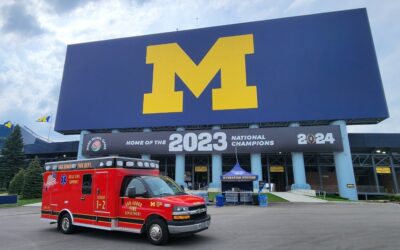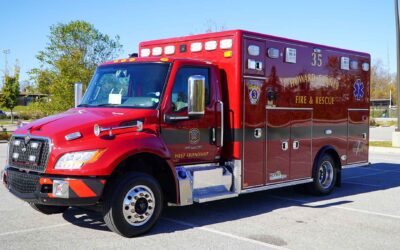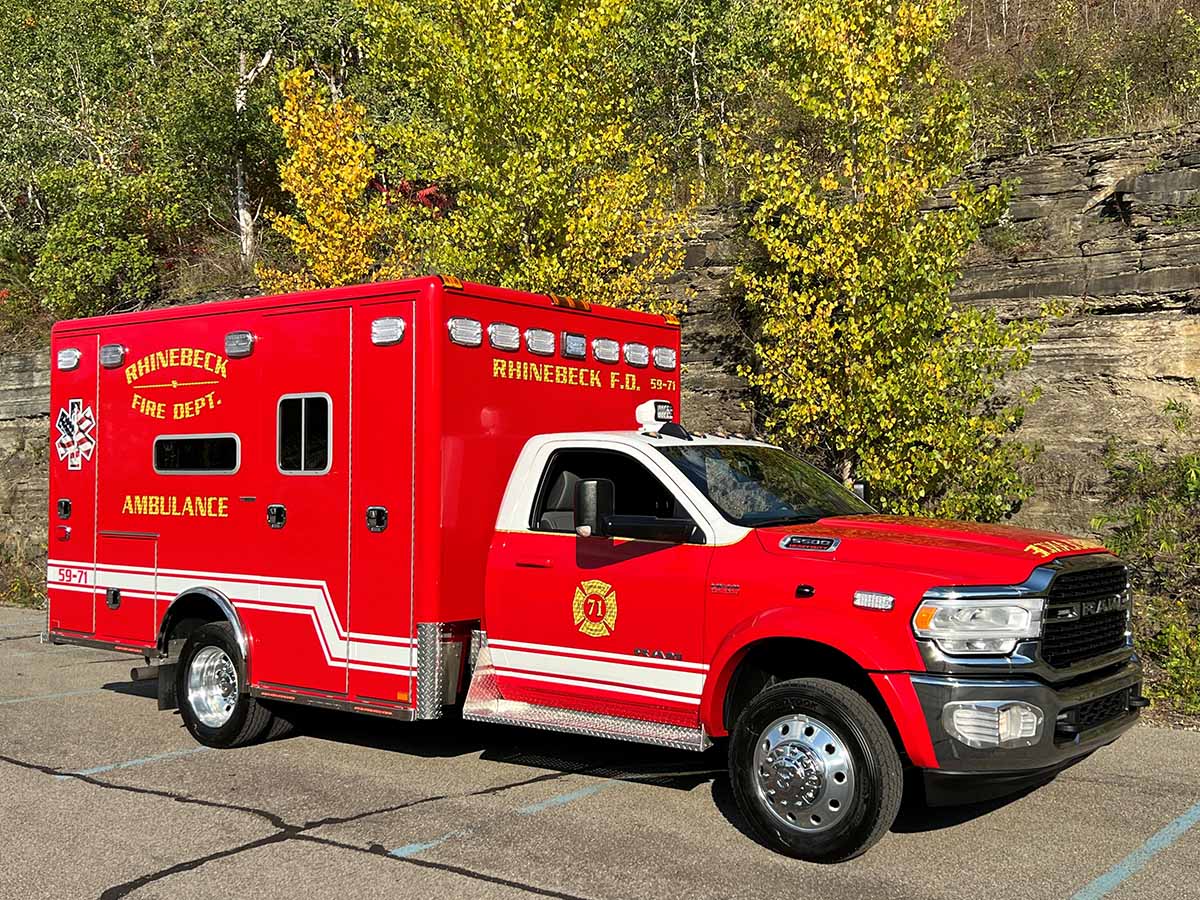
Horton Emergency Vehicles built this Type 1 ambulance on a 4WD Ram 5500 chassis for Rhinebeck (NY) Fire Department. (Photos courtesy of VCI Ambulances, except where noted.)
By Alan M. Petrillo
Rhinebeck (NY) Fire Department had a list of must-haves when it spec’d out a new ambulance. These included four-wheel drive, the same overall length as its previous rig, more storage space than the earlier ambulance, multiple airbags in the patient compartment, and an ultraviolet (UV) air conditioning system. The department got everything it was seeking in a 2022 Type 1 4WD ambulance from Horton Emergency Vehicles.
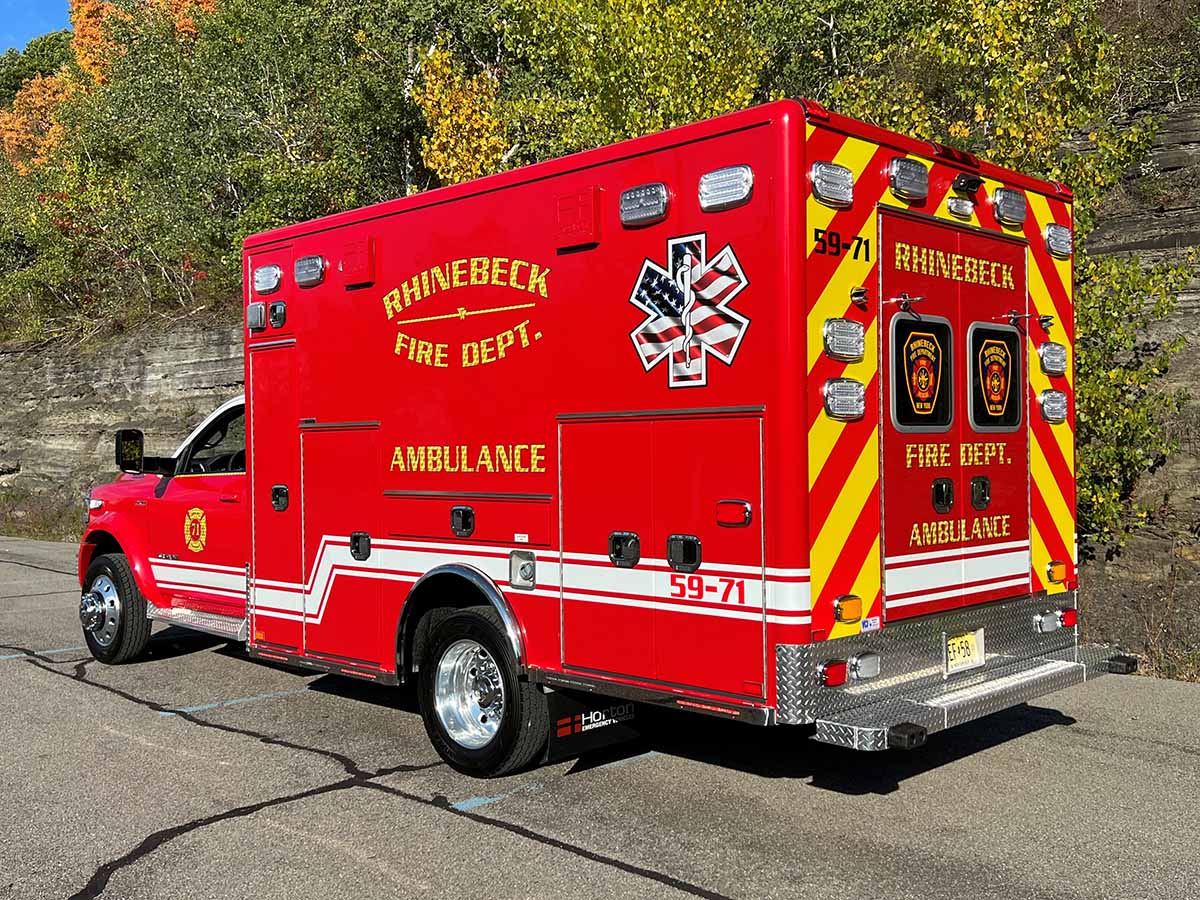
Rhinebeck’s new ambulance has Horton’s Vi-Tech Body Mounting System, and a Liquid Spring rear suspension.
Jeff Cotter, Rhinebeck’s EMS captain, says the department services 7,500 people in the village and town of Rhinebeck for fire an emergency medical service. The department staffs an engine, rescue-pumper, pumper-tanker, 110-foot aerial, a BLS ambulance, and BLS fly car with 50 volunteer firefighters, 27 of whom are EMTs.

The attendant seat at the head of the Stryker PowerLOAD mounting. Note the crawl through to the left of the attendant seat.
“Our previous ambulance was a Type 3 and had a 170-inch patient box, so we wanted to keep the same overall length,” Cotter observes, “but we wanted to get increased storage on the new rig. Also, safety features like multiple airbags were very important to us, as was a disinfecting air conditioning system.”
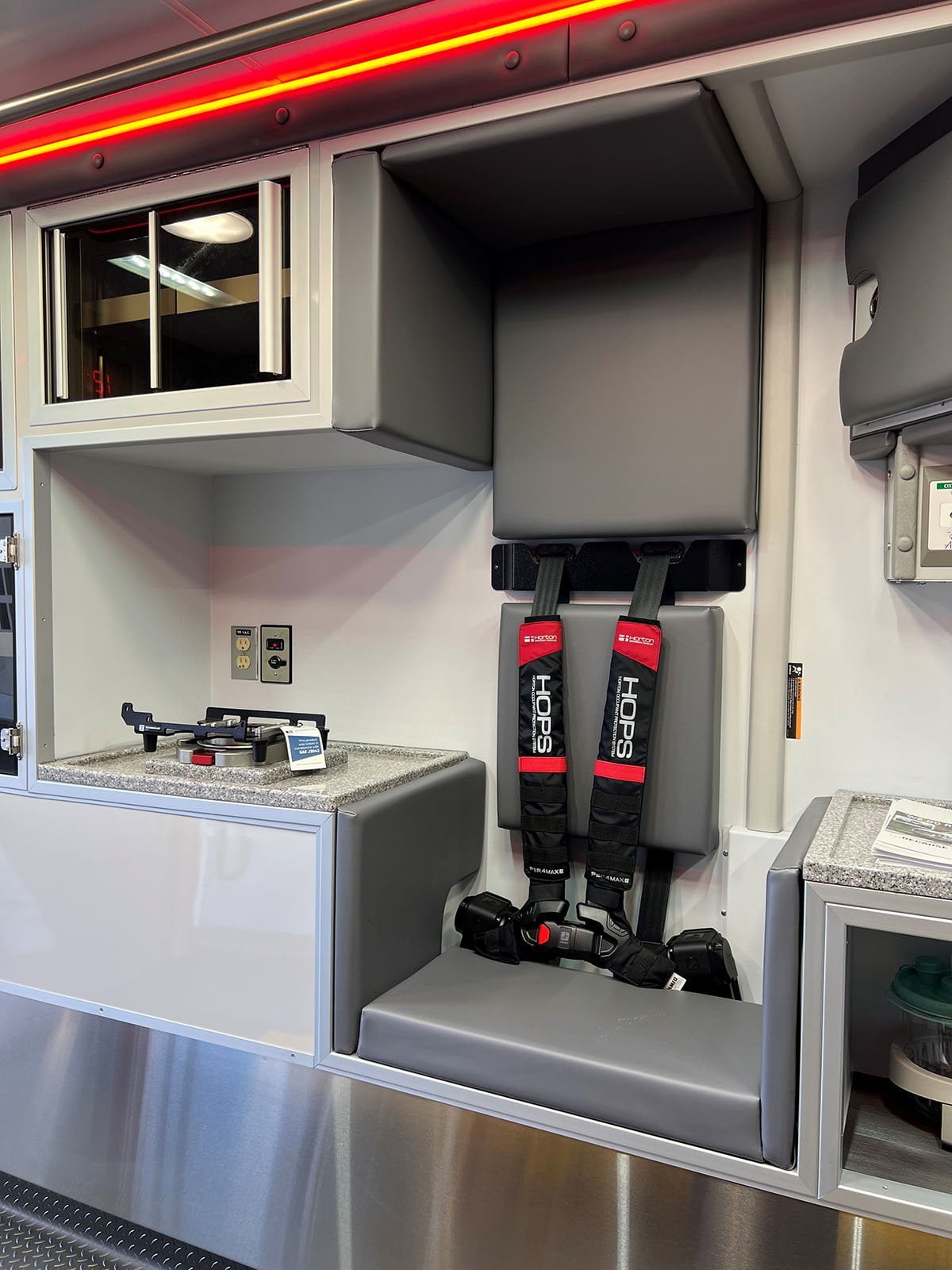
All seats are protected by Per4Max four-point seat belts.
Cotter notes that 90% of Rhinebeck’s EMS patients are transported to a hospital in the village of Rhinebeck. “That’s usually a five- to ten-minute ride to the hospital, so we went with a gasoline engine in our new ambulance, instead of a diesel engine because of the possibility that such short runs might not get the diesel up to operating temperatures to properly handle emissions control.”
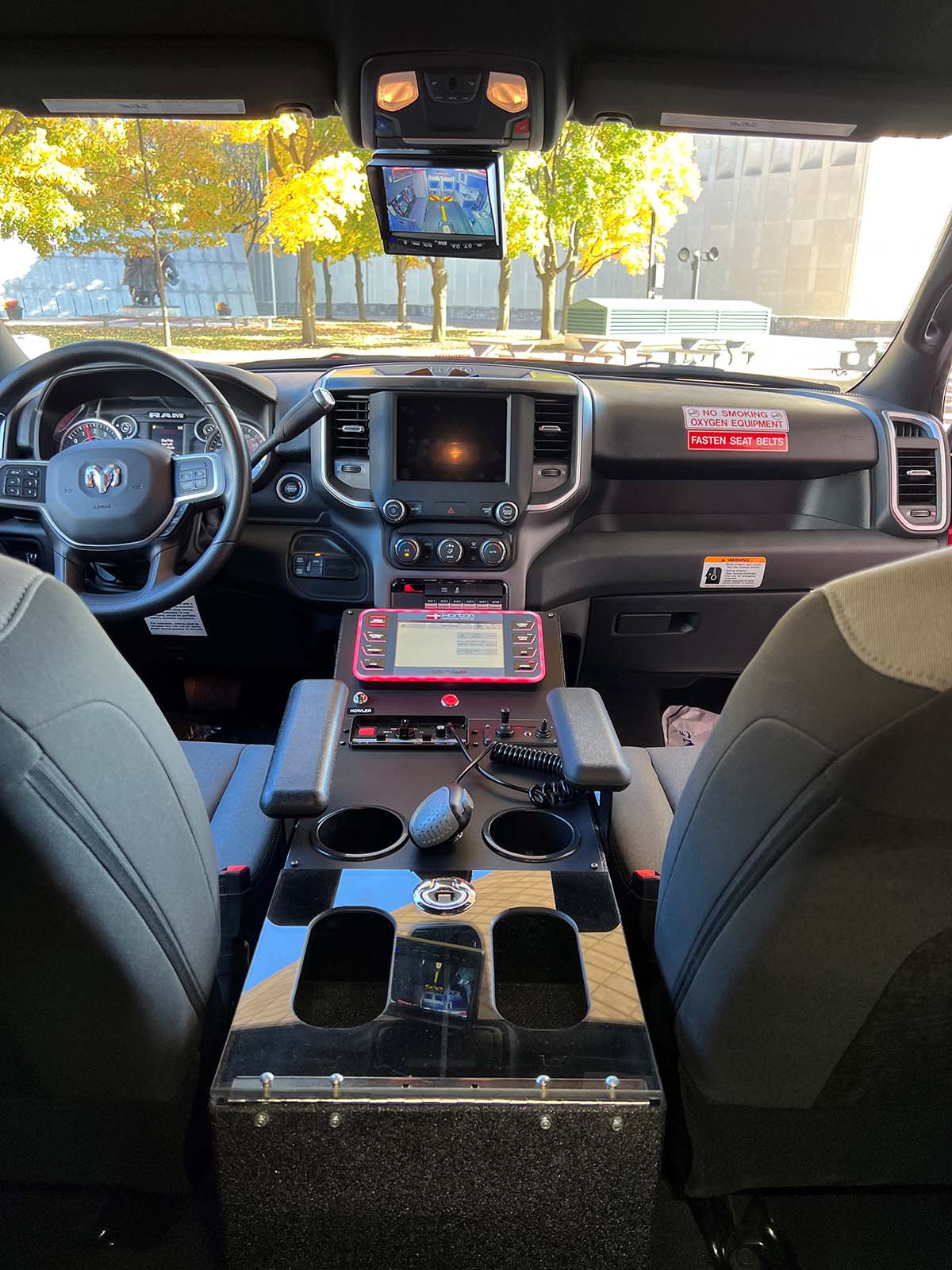
The cab in the new Rhinebeck Type 1.
Dave Marshall, director of sales for Horton, says the Type 1 ambulance Horton built for Rhinebeck is on a 2022 Ram 5500 4wd chassis with Horton’s 457 patient module, which is a 157-inch box with head room increased two inches from 72 to 74 inches. “The ambulance has Horton’s Vi-Tech Body Mounting System™ that employs neoprene inserts tested to 35Gs to connect the body outside the chassis frame rails for less vibration, better handling, more strength, and smoother quieter runs,” Marshall points out, “along with a Liquid Spring rear suspension.”
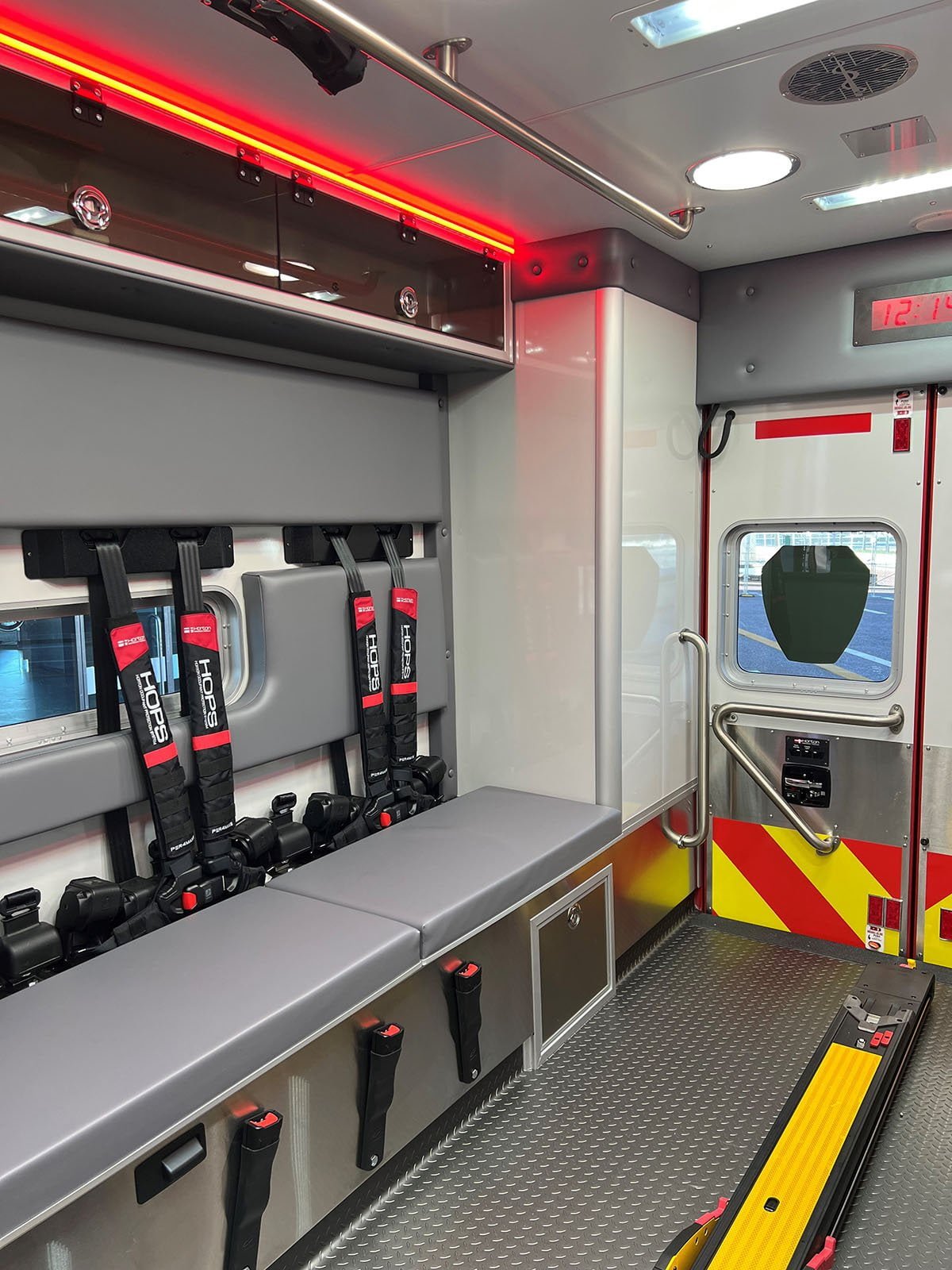
The squad bench on the curb side of the interior is set up for three seating positions.
Rhinebeck’s new rig also has the Horton Occupant Protection System™ (HOPS™) that provides airbags in the module and progressive foam at head-strike points that absorbs energy on impact. Marshall adds that HOPS includes Per4Max four-point seat belts with four automatic retractors at both shoulders and hips that secure medics while giving them the mobility needed to provide treatment to a patient.
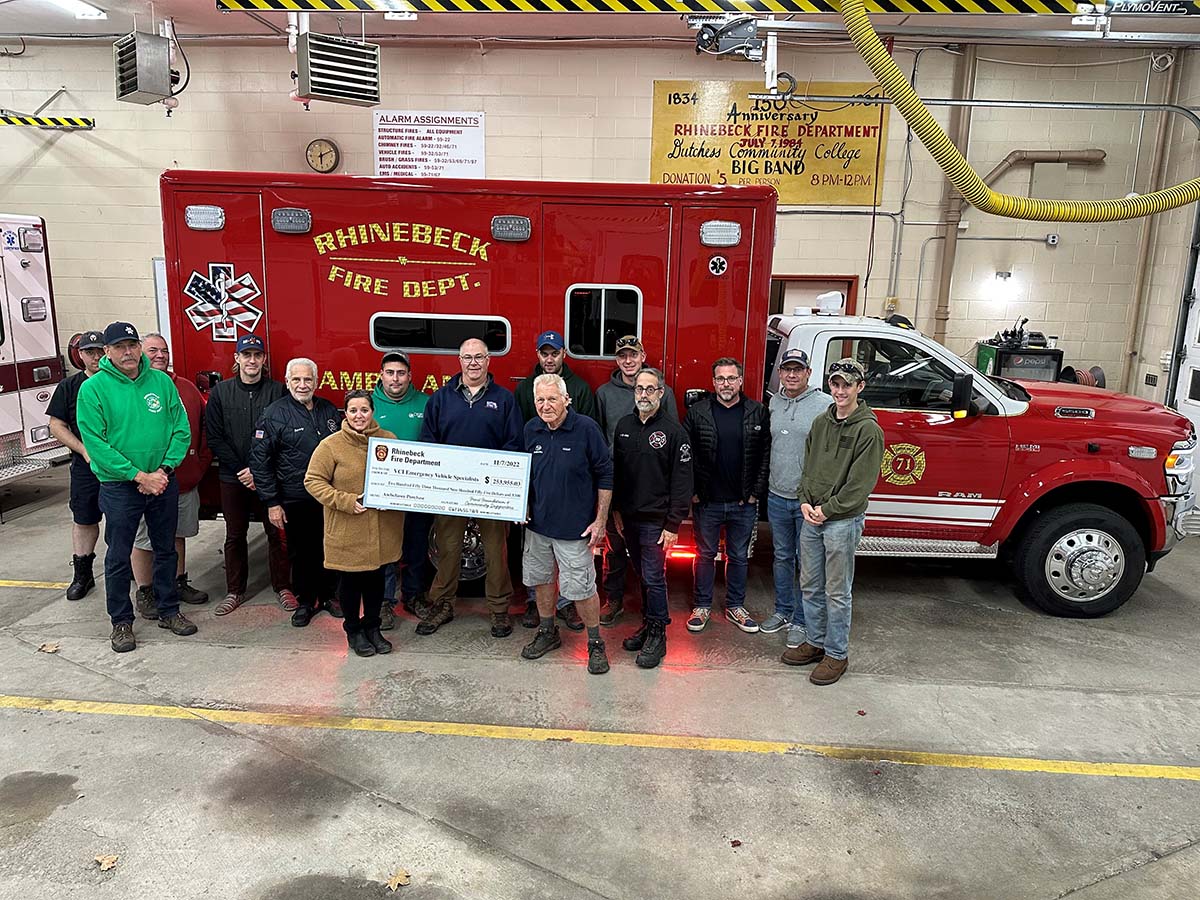
Purchase of the new Horton Type 1 was made possible by contributions from the community, including the Frost Memorial Fund and the Rhinebeck Interact/Rotary Club. (Photo courtesy of Rhinebeck Fire Department.)
The Horton Type 1 for Rhinebeck also carries the Cool-Tech™ 1 100,000-btu (British thermal unit) condenser for the air conditioning system, an Induct 500 infection control air purification system, a third OEM vehicle battery, a Vanner 1000 LifeSine® inverter charger, solid surface countertops, street side stocking cabinets, a Technimount for a defibrillator, a three-position squad bench, and three oxygen connections – two in the street side action area and one above the squad bench.
Lighting on the new rig, Marshall says, includes a front cab-mounted GO Light spotlight, rub rail and underbody Sun Strip LED lighting, and Whelen LED warning and scene lighting.
Jeff DelRado, emergency vehicle consultant for VCI Ambulances, which sold the Horton to Rhinebeck, adds that the Type 1 carries a Stryker PowerLOAD mounting, a backup camera and a dome camera in the patient box to allow the driver to monitor what’s happening the treatment area, and Horton tactical lighting in the patient box “that places strip LED lighting in all the corners so the lighting washes across the interior of the vehicle with no hot spots, and isn’t focused directly over the patient.”
ALAN M. PETRILLO is a Tucson, Ariz.-based journalist, the author of three novels and five non-fiction books, and a member of the Fire Apparatus & Emergency Equipment editorial advisory board. He served 22 years with Verdoy (NY) Fire Department, including the position of chief.


